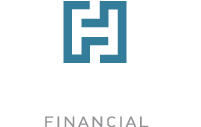INFORM
AUGUST 2017
BROUGHT TO YOU BY FINANCIAL WISDOM
.jpg) UNDERSTANDING THE MEDICARE LEVY
UNDERSTANDING THE MEDICARE LEVY
Ever wondered why your EOFY tax bill was higher than you expected? It could be because of the Medicare Levy. So what does the levy pay for - and how is it calculated?
Medicare is Australia’s publicly funded national healthcare system. The federal government funds the system by charging taxpayers a levy on top of their annual income tax. Thanks to this levy, all Australians can enjoy access to quality health care.
Medicare provides access to a wide range of health care and hospital services, including:
- free or subsidised treatment when you visit a medical professional such as a doctor, optometrist or specialist
- free treatment and accommodation when you’re a public patient in a public hospital
- 75% of your treatment and procedure costs when you’re a private patient in a public or private hospital (not including accommodation fees and other costs)
- reduced costs for prescription medications in some cases.
For most eligible taxpayers, the levy is currently charged at 2% of their taxable income. However, the government has proposed to increase this rate to 2.5%. If this legislation is passed, it will take effect in July 2019.
If you’re required to pay the Medicare Levy, it’s automatically calculated against your taxable income when you lodge your yearly tax return.
You can use the Medical Levy Calculator on the Australian Taxation Office (ATO) website to work out how much you can expect to pay.
If you’re single and your taxable income was below $21,655 for the 2016–17 financial year (or $34,244 if you’re a single senior or pensioner entitled to the seniors and pensioners tax offset), then you don’t have to pay the Medicare Levy.
For families, you’ll be exempt from the Medicare Levy if your 2016–17 household income was below $36,541 (or $47,670 for eligible seniors and pensioners), plus $3,356 for each dependent child or student.
You may also be exempt if:
- you suffer certain medical conditions
- you’re a foreign or Norfolk Island resident
- you’re not entitled to Medicare benefits – for instance, you’re not an Australian citizen.
Keep in mind, there are specific requirements for each category, so you may need to check whether you’re eligible for an exemption.
There are instances when some people will only be charged a partial Medicare Levy. For instance, you’ll pay a reduce rate if you’re single without dependants and your taxable income for the 2016-17 financial year was above the exemption threshold but less than $27,069 (or $42,806 for seniors and pensioners entitled to the seniors and pensioners tax offset).
Families may be charged a partial Medicare Levy if their household taxable income is below $45,676 (plus $4,195 for each dependent child).
To be eligible for a reduction, you also need to meet certain conditions.
If you don’t have the appropriate level of private hospital insurance, you may be charged an extra amount on top of the 2% levy. This is called the Medical Levy Surcharge (MLS) and only applies if your taxable income is over $90,000 for singles or $180,000 for families.
The MLS can range from an additional 1% to 1.5% depending on your income level. You can see a full breakdown of thresholds and rates on the ATO website.
If you have an acceptable level of private hospital insurance, you won’t be charged the MLS. But first, you’ll need to provide information about your private health cover payments on your tax return.
If you’d like to know more about how the Medicare Levy might impact your financial situation, speak to your financial adviser on 07 3393 1300.
